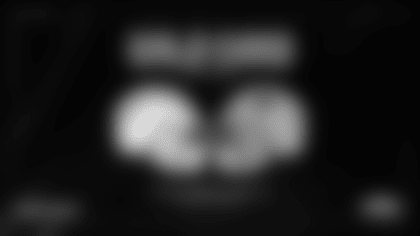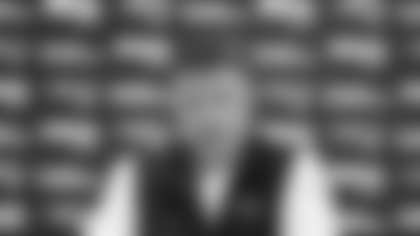In a week in which three of the five black coaches in major college football were fired, the NFL added a sixth black coach, albeit an interim one: Terry Robiskie took over in Cleveland when Butch Davis stepped down.
Temporary or not, the moves last week were symbolic of the difference in minority hiring between the NFL and college football.
After years of struggling, the pros seem to have a system in place that allocates jobs on merit. The colleges seem stuck where the NFL was for decades, handing out head coaching jobs based on reputation in a network that seems almost exclusively white.
I know there's a lot of pressure in college ball to get big names, to get guys who are known,'' says Indianapolis coach Tony Dungy, the front man for equal opportunity in the NFL for a decade.But there are so many good coaches out there they can choose from, they have to be able to pull the trigger on minorities.''
That's what the NFL seems finally to have figured out _ with help from both inside and outside.
Fritz Pollard was the NFL's first black coach, a player-coach in the early 1920s. But there wasn't another until Art Shell took over the Raiders in 1989.
And just two years ago, Dungy and the Jets' Herman Edwards were the NFL's only black head coaches. That's when a Washington lawyer named Cyrus Mehri, who had successfully and without much publicity integrated a number of major corporations, held a news conference with lawyer Johnnie Cochran Jr. They implied that unless the NFL took steps to add more minority head coaches, there might be a lawsuit in the future.
But Mehri and Cochran were only saying publicly what commissioner Paul Tagliabue and some powerful NFL people had been urging privately.
Tagliabue used their ``threat'' to appoint a committee headed by Pittsburgh owner Dan Rooney and stacked with like-minded owners and executives. It recommended and Tagliabue enacted a policy that required all teams with coaching vacancies to interview at least one minority candidate.
Marvin Lewis was hired by the Bengals after that season.
This year, the Bears hired Lovie Smith. Dennis Green, who spent 10 seasons coaching the Vikings, returned to the league with the Cardinals. Add in Robiskie and 13 black coordinators, some considered prime candidates for future openings. Plus, most teams have several minority position coaches.
Things seem to be working so well, in fact, that New England defensive coordinator Romeo Crennel, a fairly hot candidate, implied recently if he doesn't get a head coaching job, his age (57) might be a bigger factor than his race.
``You have to institutionalize it to get it to work and I think the commissioner has recognized that for a long time,'' says Richard Lapchick, a longtime civil rights advocate now with the Institute of Diversity and Ethics in Sports at the University of Central Florida.
``The NCAA is trying, but there are a lot more colleges and it certainly has a long way to go. What's happened in the last week certainly isn't encouraging.''
The NFL's push goes back to 1987, when it became obvious there had to be more blacks in supervisory positions in a league in which more than two-thirds of the players are minorities. That's when the NFL began a minority intern coaching program, bringing young black college coaches into training camps for six weeks of learning.
It put blacks into the pipeline and turned what was an almost all-white ``old boy'' network into an equal-opportunity network. Smith, Edwards and Lewis all started there and so did UCLA coach Karl Dorrell, one of the two blacks still coaching Division I-A teams; Mississippi State's Sylvester Croom is the other.
When Dungy got his first head coaching job at Tampa Bay in 1996, he was looking for a linebackers coach. He considered several without regard to race and settled on Smith, who was an assistant at Ohio State.
I wanted a teacher, and I asked our college scouts who they thought would fit,'' he says.After watching some video of Lovie's players at Tennessee and Ohio State, I decided that's what I was looking for.''
After five years with the Bucs, Smith moved up to defensive coordinator of the Rams. He did well there and became one of the prime candidates for a top spot after last season.
He got several interviews and landed with the Bears, the perfect example of a talented coach moving up the ladder on merit.
The interview system is another way the NFL has changed.
When the late George Young ran the league's football operations department, he began videotaping interviews with assistant coaches, mostly minorities but some whites. The tapes are circulated among the 32 teams, allowing them to put together a file for future hirings.
Tagliabue set the example in the NFL office.
Harold Henderson, the league's senior vice president for labor relations, is black and so are a number of other high-ranking officials: Larry Upson, the director of officiating operations; Shell, who now holds Young's job; Gene Washington, the league's disciplinarian; and Mike Haynes, vice president of player development.
One of the problems in college is that there is less central authority.
Myles Brand, the NCAA president, urged colleges last week to give more consideration to minorities for coaching vacancies. And colleges have begun an internship program based on the NFL's.
But the NCAA has little power over the hiring decisions of 117 schools and no enforcement power. Tagliabue has it.
It has taken time, from 1987 to 2004. But with a little push from outside, it now seems to be working in the NFL.
- Pittsburgh (11-1). Not playing as well now as the Patriots or Eagles, but beat them both.
- New England (11-1). Winning bigger than during their 21-game winning streak.
- Philadelphia (11-1). The weak NFC provides an easier road to the Super Bowl.
- Indianapolis (9-3). If it was based only on offense, the Colts would be No. 1.
- San Diego (9-3). Sign of a good team: big defensive plays in a tight game.
- New York Jets (9-3). Certainly better than any NFC team but Philly.
- Seattle (6-6). Two horrible late losses.
- Arizona (4-8). OK at home, but have to win on the road.
- New York Giants (5-7). Starting to look like they did late last season. Not Eli's fault.
- New Orleans (4-8). Haslett is all but gone.
- Miami (2-10). At least the Dolphins are trying.
- San Francisco (1-11). Last by a large margin.






























